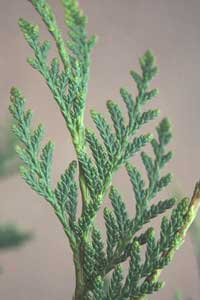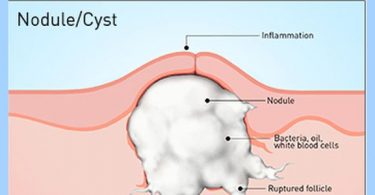For many government policy-makers, educational institutions and healthcare practitioners, it’s no longer acceptable to use a healthcare intervention simply because it has a history of use. The call for “evidence based medicine” becomes louder and more strident with each passing year and it affects all types of healthcare interventions; devices, procedures and medicines. Fortunately, we have a growing body of research data that supports the practice of homeopathy. Following are brief discussions on some of the more interesting work that’s been done in this area.
Human Research
- Nayak C, et al. Management of distress during climacteric years by homeopathic therapy. J Altern Complement Med, 2011, 17, 11, 1037-42. Researchers from India’s Central Council for Research in Homoeopathy (CCRH) carried out this study to investigate the effects of indivdualised homeopathic therapy on the FSH levels, blood lipid profile, signs and symptoms experienced by women suffering from menopause. Patients were enrolled from 6 CCRH outpatient clinics and received one dose of an individualised homeopathic medicine from homeopathic medical specialists in accordance with their experience of 15 predetermined menopause symptoms. These as well as their FSH and blood lipid profiles were assessed at baseline and again at 12 months from this point. An assessment of the results was made through statistical analysis using the Wilcoxon signed rank test on Statistical Package for Social Sciences (SPSS), the result of which was a significant association between the therapeutic invention and relief from the menopausal symptoms that were assessed. A significant association was also found between the homeopathic therapy and improvements in the blood cholesterol, triglycerides and VLDL profiles of the study subjects. The medicines found to be most frequently indicated and useful were Sepia, Lachesis, Calcarea carb, Lycopodium, and Sulphur.
- Alecu A, Gafitanu D, Alecu M. Homeopathic dilutions of TNF-alfa in psoriasis and rheumatoid arthritis. Int J High Dilution Res, 2012, 11, 40, 204-205. Proceedings of the XXVI GIRI Symposium; 2012, Sep, 20-22; Florence (Italy). A Romanian team tested the hypothesis that Tumor Necrosis Factor (TNF) alpha, a pro-inflammatory cytokine, would, when homeopathically potentised, exert an anti-inflammatory effect. To do this, 10 people diagnosed with either active psoriasis or rheumatoid arthritis, were given daily doses of TNF alpha 9C for 3 months and assessed at the beginning and end of the treatment period. After analyzing the results it was shown that all patients experienced an amelioration of symptoms, with 2 of the 6 people suffering from psoriasis experiencing complete remission of their symptoms.
3. Harrison CC, Solomon EM, Pellow J. The effect of a homeopathic complex on psychophysiological onset insomnia in males: a randomized pilot study. Altern Ther Health Med, 2013, 19, 5, 38-43. In a randomized, double-blind, placebo-controlled, 4-wk pilot study, using matched pairs, researchers from the Homeopathy Health Clinic at the University of Johannesburg in South Africa enrolled 28 males aged between 18 and 40 years diagnosed with chronic psychophysiological onset insomnia (POI). 14 were given a homeopathic combination and 14 were given a placebo. The results were assessed using the Pre-sleep Arousal Scale (PSAS) and the Sleep Diary (SD), which assessed sleep-onset latency. On analysis of the results it was found that the group receiving the homeopathic combination showed a statistically significant improvement in pre-sleep arousal as well as sleep onset latency over the 4 wks of the study. Intergroup analysis showed through both the PSAS and the SD that the homeopathic combination group had outperformed the placebo group by day 28 of the study.
- Ganguly S, et al. Homeopathic treatment of vitiligo: an open observational pilot study. Int J High Dilution Res, 2013, 12, 45, 168-177. This Indian research was carried out to evaluate the effects of homeopathic treatment for people suffering from vitiligo. 27 participants were recruited for a prospective open-label pilot study and treated with individualized homeopathic medicines for 6 months. Efficacy was assessed after 3 months and 6 months using Vitiligo Area Scoring Index (VASI) score, Vitiligo European Task Force (VETF) score, and Dermatological Life Quality Index (DLQI) score, which are validated outcome measures evaluating the area, intensity, spread of depigmentation of vitiligo lesions, and quality of life (QoL). After 6 months of treatment, the median VASI total score improved significantly. Similarly, the VETF median score improved and the total DLQI median score exhibited significant improvement.
- von Ammon K, et al. Long-term effects of homeopathic treatment in children suffering from attention deficit disorder with and without hyperactivity. Int J High Dilution Res, 2013, 12, 44, 119-120. Proceedings of the XXVII GIRI Symposium; 2013, Sep, 03-04; Bern (Switzerland), 119. 56 children diagnosed with ADHD in accordance with the criteria set out in the DSM-IV were treated with individualised homeopathy using a randomized, double blind, placebo controlled trial (RCT), embedded in a prospective observational study design. After diagnostic screening and a primary run-in phase of homeopathic treatment, crossover RCT was followed by open-label long term follow-up and cost-effectiveness evaluation. At diagnosis, beginning of, and after each crossover period, and at yearly intervals over 10 years, parents reported Conners’ Global Index (CGI, 10 items, rated 0-3 points each; primary variable) by questionnaire or telephone interview. By the end of the study, 62% of the children were without any homeopathic (HOM) or medical treatment. In the remaining children, successful results were achieved in 6 with HOM, 9 with methylphenidate (MPH) and 3 with both HOM and MPH. During cross-over RCT, CGI values detected clinically and statistically significant differences between verum and placebo phase, respectively. Cost-effectiveness evaluation demonstrated non-inferiority of homeopathic treatment compared to MPH treatment.
6. Coppola L, Montanaro F. Effect of a homeopathic-complex medicine on state and trait anxiety and sleep disorders: a retrospective observational study. Homeopathy, 2013, 102, 4, 254-61. This open-label observational study was designed to examine the effects of a homeopathic combination product on anxiety and the quantitative changes in the sleep pattern of the subjects included in the study. 71 people suffering from mild to moderate anxiety were assessed for anxiety and sleep habits at baseline and again after 30 days of use of the combination. At both visits, subjects were administered the State-Trait Anxiety Inventory (STAI)-Y questionnaire (consisting of trait and state subscales) to assess their level of anxiety. Sleep quality was assessed based on the subjects’ self-reported number of hours slept and number of night-time awakenings, before and after treatment. When compared to baseline, the average (STAI)-state score at visit 2 decreased by more than 6 points, while the STAI-trait score decreased by more than 3 points. The average number of hours slept per night increased significantly at visit 2 compared to baseline, and a 42% decrease in the average number of night-time awakenings was also observed.
- Maas HPJA. Ulcerative Colitis treated with Homoeopathy British Homoeopathic Journal, 1983, July 82, 179-185. In this retrospective case analysis, 24 people suffering from ulcerative colitis were treated in an Argentinean clinic using constitutional homoeopathy over periods of up to 19 years. Of these 24, 16 patients were assessed as having good outcomes.
Animal Research
- Zacharias F, et al. Effect of homeopathic medicines on helminth parasitism and resistance of Haemonchus contortus infected sheep. Homeopathy, 2008, 97, 3, 145-51. This Brazilian study reports the findings of a group investigating the effects of 3 homeopathically potentised substances on sheep infected with the Barber’s Pole worm (Haemonchus contortus), a pathogenic nematode common to sheep. 20 sheep were randomly assigned to receive Doramectin, a commonly used antihelminthic; homeopathically prepared Ferrum phos, Arsenicum album and Calc carb; or no treatment. Faecal and blood samples were taken 18, 38 and 68 days from baseline and these checked for evidence of the parasite. On assessment of these results an association was found between the use of the homeopathic preparations and a reduction in the presence of the parasites, leading to an improvement in vital function and weight gain. In addition, the homeopathic option was also found to be more economical than the standard antihelminthic method of management.
- Camerlink I, et al. Homeopathy as replacement to antibiotics in the case of Escherichia coli diarrhoea in neonatal piglets. Homeopathy, 2010, 99, 1, 57-62. This work, performed by a team primarily from the Wageningen University in The Netherlands, concerns the design and outcomes of the homeopathic treatment of piglets suffering from diarrhoea associated with E. coli. 52 sows in their last month of gestation were given either placebo or a homeopathically potentised preparation of E. coli twice weekly for that month. These sows subsequently gave birth to 525 piglets; 265 from the placebo sow group and 260 from the homeopathic E. coli group and all were monitored for E. coli diarrhoea. On analysis of the results from the observations made of both groups, it was found that the piglets from the placebo group had a diarrhoeal incidence that was 6 times higher than the piglets from the homeopathic group.
In-Vitro Research





DEAR DR,
ALL UPDATES ARE MORE STATISTICAL THEN ADDITION TO ASSIST THE LEARNERS IN THEIR PRACTICE
THANKS